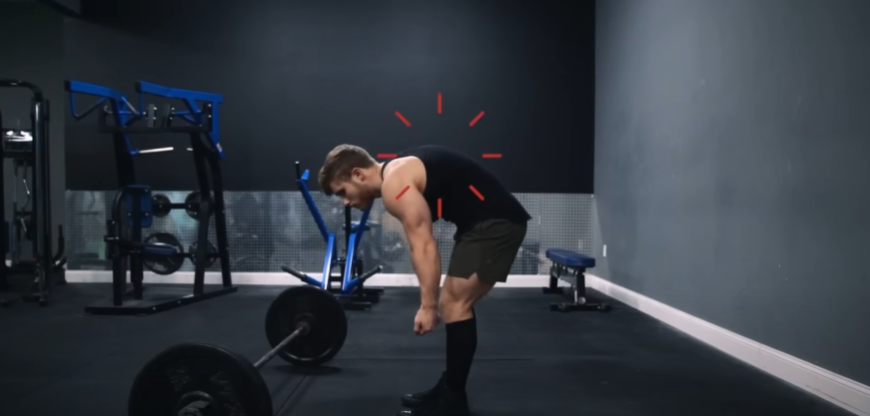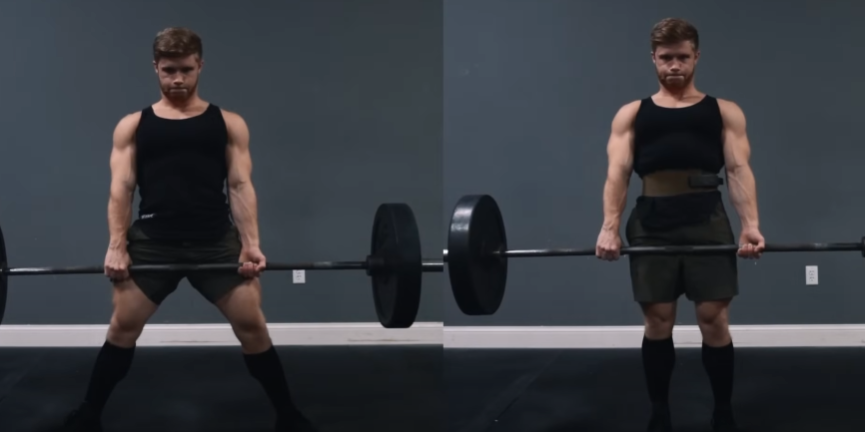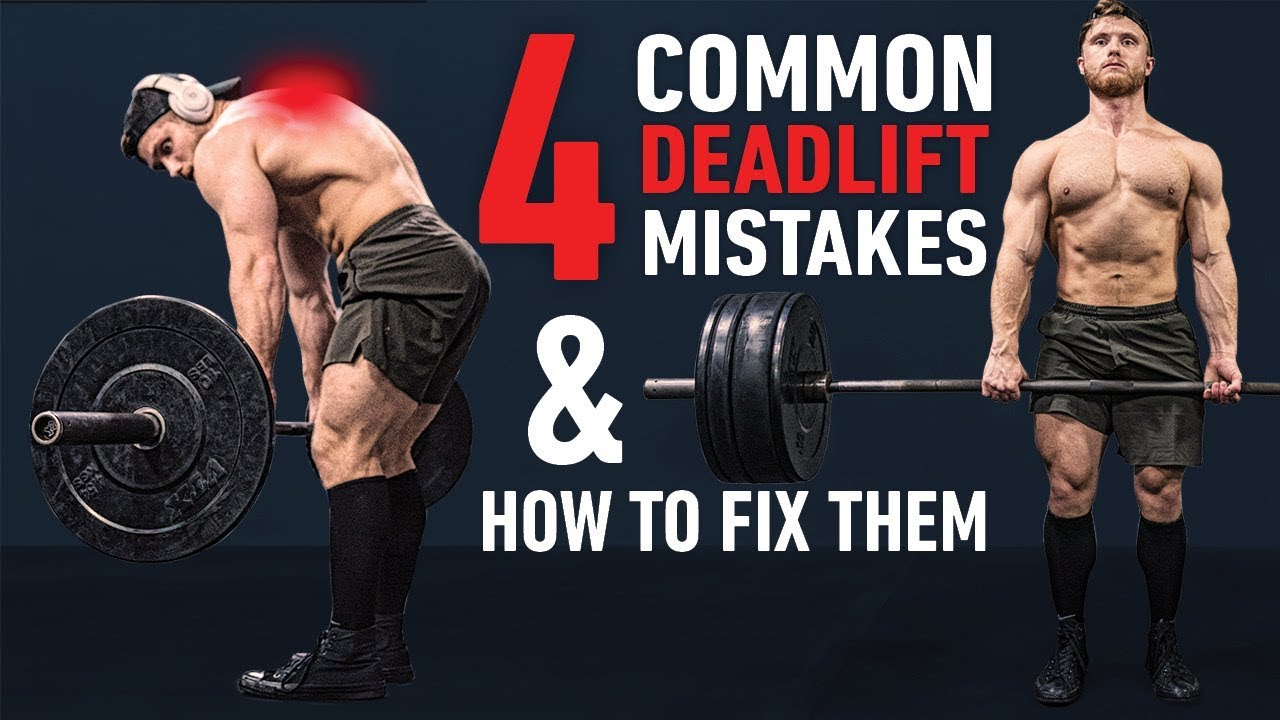The deadlift is one of the best exercises for total-body strength and muscle growth. It trains your posterior chain, builds serious pulling power, and carries over to almost every athletic movement. But here’s the truth: most lifters perform it wrong.
A sloppy deadlift doesn’t just limit your progress—it also puts you at risk for lower back injuries, hip pain, and stalled strength gains. Whether you pull conventional or sumo, avoiding common mistakes can make the difference between a strong, safe lift and months of frustration.
Today, we’ll cover four of the most common deadlift errors, why they happen, and exactly how to fix them.

1. Lower Back Rounding
If you’ve ever filmed your deadlift, chances are you’ve noticed some rounding in your spine. A slight curve in the upper back is normal (and even biomechanically advantageous for some lifters), but excessive rounding in the lower back is one of the fastest ways to get injured.
Why It Happens
According to biomechanics expert Bret Contreras, rounding the back shifts the hips closer to the bar, reducing torque on the glutes and hamstrings—making the lift feel easier. Unfortunately, this also places huge stress on the lumbar spine.
The problem usually isn’t weak spinal erectors; it’s weak glutes and tight hamstrings forcing your body to compensate.
How to Fix It
✅ 1. Improve Hamstring Mobility
If you feel an intense hamstring stretch just trying to get into a neutral spine position, your flexibility is holding you back. Work on dynamic stretches and foam rolling before training, and include Romanian deadlifts or other loaded stretching movements to lengthen the hamstrings over time.
✅ 2. Strengthen the Glutes
Your lower back often rounds because your glutes can’t produce enough hip extension force. Add hip thrusts, cable pull-throughs, and glute bridges to your accessory work.
✅ 3. Use Paused Deadlifts
If you start with a neutral back but round as the bar leaves the floor, paused deadlifts can reinforce proper spinal extension. Pause just off the floor or below the knees for 1–2 seconds while keeping your back flat. Start light—50–60% of your max for 4–6 reps—and build up gradually.
✅ 4. Check Your Load
If you can’t hold proper form, you’re probably lifting too heavy. Drop the weight until you can maintain a strong, neutral spine throughout the pull.
2. Hips Shooting Up Too Early
One of the most obvious deadlift mistakes is when the hips rise faster than the chest, turning your pull into an ugly stiff-legged deadlift.
Why It Happens
Most lifters set up incorrectly, starting with their hips too low—as if they’re about to squat the weight up. When the lift begins, the hips naturally shoot up to a stronger pulling position, leaving the lower back to take the load.

How to Fix It
✅ 1. Fix Your Setup
Instead of sitting your hips down like a squat, push them back until you feel your hamstrings stretch. Only then let your knees move slightly forward until your shins touch the bar. Your hips should start higher than you think.
✅ 2. Initiate with Hip Drive
At the start of the pull, think about pushing the floor away and driving your hips forward, not just standing up. Your chest and hips should rise at the same rate.
✅ 3. Film Your Setup
Record yourself from the side. If your hips still pop up, adjust your starting position until the bar breaks off the floor smoothly.
3. Poor Joint Stacking
A powerful deadlift depends on optimal leverages. If your joints aren’t properly aligned, you’ll leak strength and increase injury risk.
What Good Alignment Looks Like
- From the front: Your knees should track directly over your heels, forming a straight vertical line.
- From the side: Your shins should be as close to vertical as possible.
If your knees cave inward or your feet are too wide, you’re wasting energy and putting stress on your hips and knees.
How to Fix It
✅ 1. Adjust Your Stance
For sumo deadlifts, narrow your stance slightly if your heels extend past your knees. For conventional pulls, experiment with stance width until your shins stay vertical.
✅ 2. Improve Hip Mobility
Tight hips can prevent proper knee tracking. Incorporate dynamic hip openers and inner thigh stretches before lifting, and static stretches afterward.
✅ 3. Wear the Right Shoes
Thick running shoes throw off your balance and change your leverage. Use flat-soled shoes, deadlift slippers, or lift barefoot for better stability.
4. Overextending at Lockout
Many lifters ruin a perfect deadlift by aggressively leaning back at the top, hyperextending their lower back. It might feel powerful, but it adds unnecessary spinal stress and doesn’t build more muscle.

Why It Happens
Most lifters are simply excited to complete the lift, so they overcompensate by “showing off” the lockout.
How to Fix It
✅ 1. Stand Tall, Don’t Lean Back
The lockout is complete once your hips and knees are fully extended. Think “stand tall,” not “lean back.”
✅ 2. Squeeze the Glutes, Not the Lower Back
Finish the lift by driving your hips forward and squeezing your glutes. Keep your chest up naturally rather than shrugging or retracting excessively.
✅ 3. Maintain Control
Explode through the pull, but as soon as you’re locked out, stabilize your posture and avoid jerking the weight.
Bonus Tips for a Stronger, Safer Deadlift
✔ Warm Up Properly: A few sets of light Romanian deadlifts, glute bridges, and hip mobility drills can activate the right muscles before pulling heavy.
✔ Progress Gradually: Don’t chase PRs every week. Build strength with consistent submaximal training and save max attempts for testing phases.
✔ Film Your Lifts: Watching your form from different angles is one of the fastest ways to identify mistakes.
Final Thoughts
The deadlift is one of the most rewarding lifts in strength training, but only if performed correctly. By addressing these four mistakes—lower back rounding, hips shooting up, poor joint alignment, and excessive lockout—you’ll build more muscle, lift heavier safely, and protect your spine for the long term.
If you want to get the most out of your training, start practicing these fixes with lighter weights until they feel natural. Over time, you’ll not only pull more weight but also develop a thicker, stronger posterior chain.



